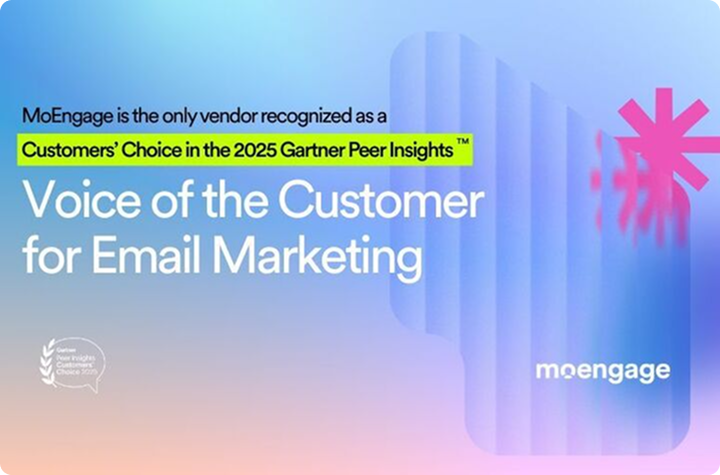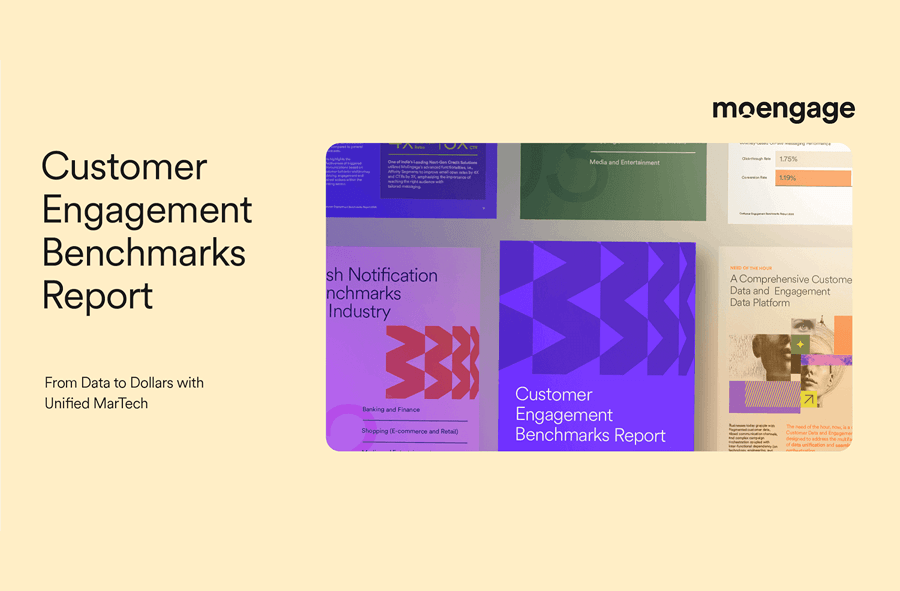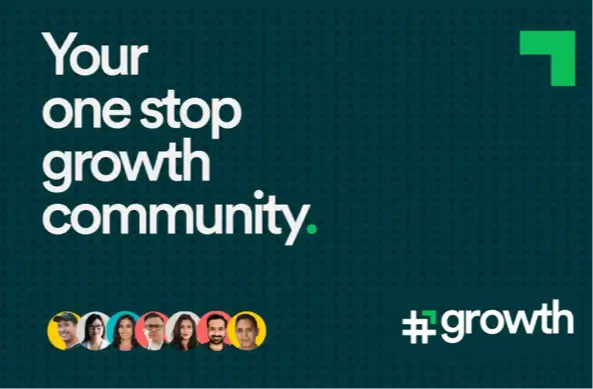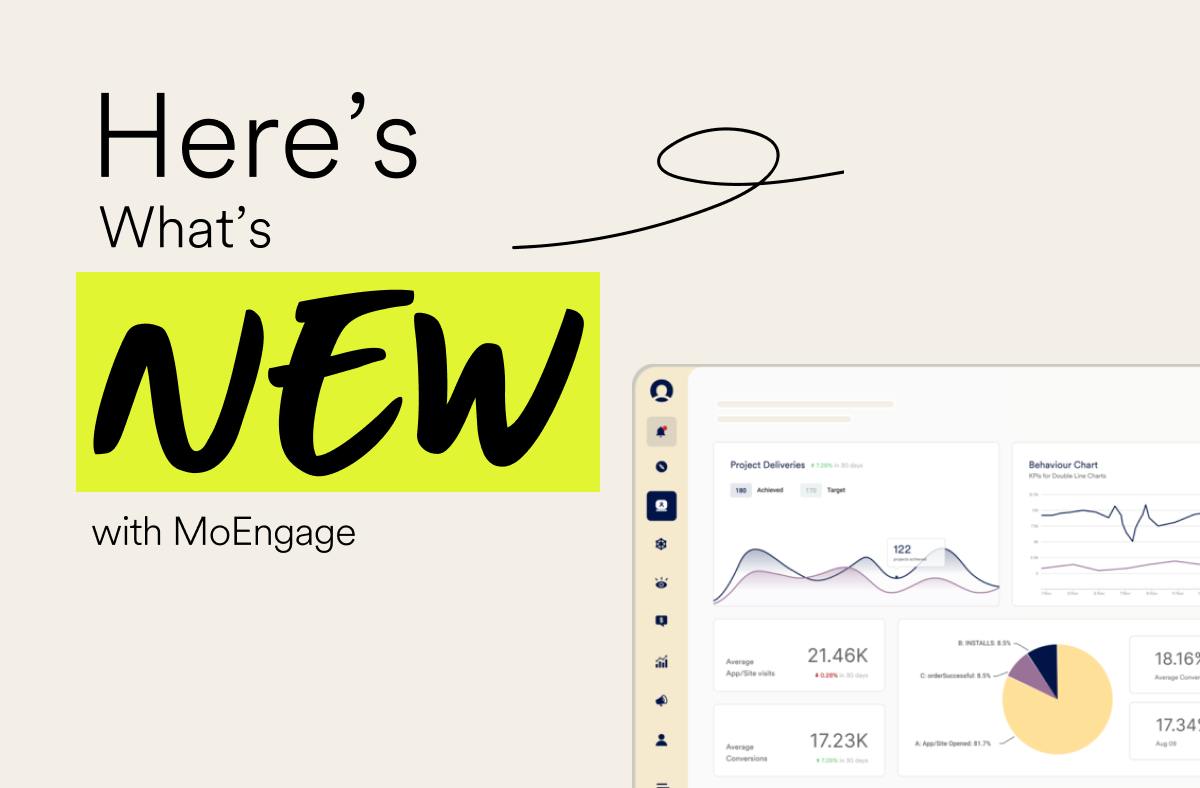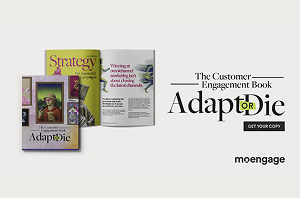Tiffany Fitzgerald Q&A: Customer Engagement Book Interview
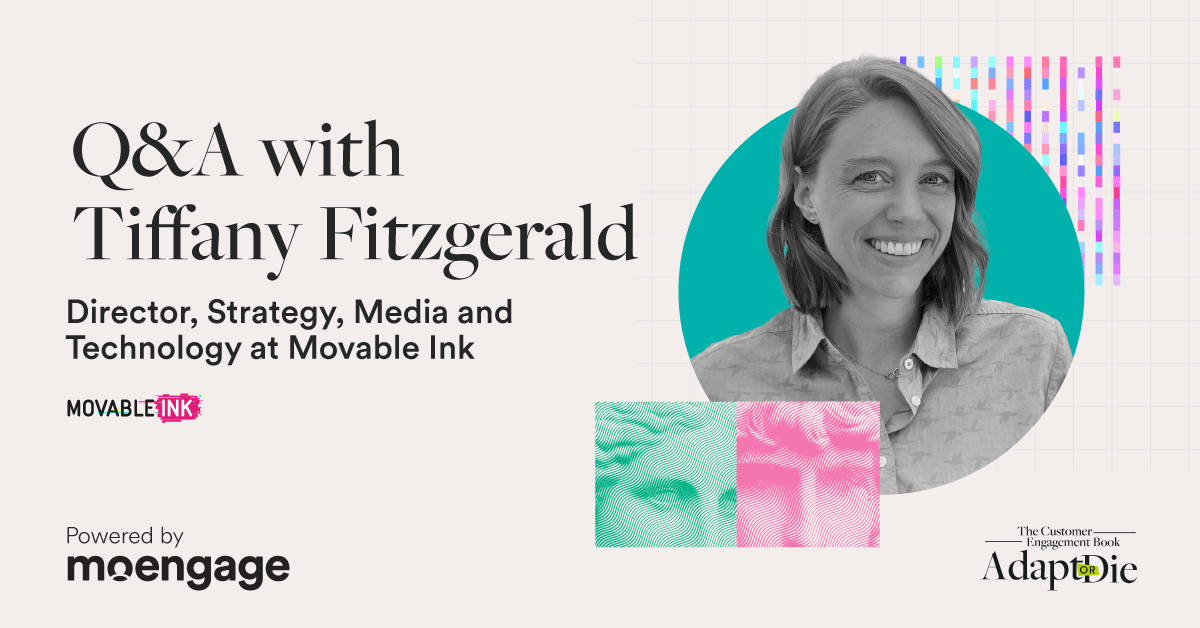
Reading Time: 9 minutes
For Chapter 3 of “The Customer Engagement Book: Adapt or Die,” our exploration of customer engagement in the evolving Martech landscape led us to an insightful interview with Movable Ink’s Director, Strategy, Media and Technology, Tiffany Fitzgerald.
This discussion delves into the significant shifts in campaign strategy over the past five years, driven by a more dynamic and data-centric digital ecosystem. Tiffany highlights the move from linear, company-driven paths to fluid, individualized customer experiences, enabled by the abundance of new data.
She also discusses the critical modern-day tools and technologies for customer engagement, including AI and deep learning in analytics, voice-of-customer tools, and personalization tools.
Read the full interview below to discover the foundational elements for effective Martech use, how marketers can align data interpretation with customer behavior, and the new skills required for customer marketers today.
Tiffany Fitzgerald Q&A Interview
1. How has customer engagement campaign strategy evolved over the past five years as a result of the evolving Martech landscape?
In the last five years, we’ve evolved to be a more complete digital omnichannel ecosystem. Campaign strategy stopped being thought of as a linear experience, and instead a more fluid, individualized experience.
Five years ago, the happy path would have been dictated by us, and we would have been leading users and customers. Now it’s led by our customers and users. This shift has been largely enabled by data.
The emergence of all this new data has shifted the way we think of the customer journey. The marketing funnel is useful in a lot of ways, but as our world has become increasingly more intricate, the funnel doesn’t work as well as it used to.
One of the things that I heard this year was an interview with Ashley Faus, who’s the head of Lifecycle Marketing at Atlassian. She described the modern-day campaign engagement strategy as a playground.
Thinking of the customer journey in a non-linear way helps us answer common challenge statements: How do we meet customers exactly where they are and lead them to their next step? How do we create environments that lead to higher retention and referrals?
If you start to think of your campaign experience as a playground instead of a funnel or an hourglass, you start to focus on creating points in time that are personalized, engaging, formative, and beautiful.
And these, of course, are just the foundational tenets of good marketing. They always have been. But in a digital-first environment, we have to help our customers to navigate information and channels that otherwise can be overwhelming
2: What do you think are some critical modern-day tools and technologies for customer engagement? And how has the Martech stack changed over the last few years?
There’s been a ton of change in the last few years, obviously due to the public eye really understanding what AI and generative AI can do. Some of the ways AI has been impactful is through deep learning in analytics.
Having a deep learning tool, something embedded in your analytics and data platform that goes beyond robotic processing or machine learning to help your team identify interesting trends and anomalies.

Five years ago, data analytics teams were left on their own to do all this work manually… Now there are a lot of great tools that do this computation and analysis, often better than we’re able to with the time and people resources we have.
Having a strong voice-of-customer tool, focusing on collecting real-time feedback from your users and customers at all points of your experience journey—has really gone from being a nice-to-have to table stakes. Having a strong mobile service provider is another one, enhancing and easily bringing SMS and mobile into your campaign repertoire.
And a strong digital analytics platform also allows you to track attribution, see what’s working in real time, and iteratively and nimbly test different ideas and approaches. This is so important because it helps to prove ROI for tech investments.
Last but not least is a personalization tool that allows you to take those insights and data and activate them to create one-to-one experiences across all of your segmentations and campaigns.
3: What foundational elements must marketers have in place to make Martech an effective precursor to campaign success?
A marketer should have a strong data strategy, and the best data strategy is usually co-created and embedded with their data team and their upstream executives.
It should ladder up directly to organizational KPIs so the team is able to consistently prove their technology investments’ worth year over year.
Another foundational element is strong relationships across their entire marketing and brand department. Creative and brand approaches need to be aligned.
That’s important for customer trust, that there’s a cohesive experience across all the channels and touchpoints.
Creative investment is necessary to give you that edge out there in the market.
4: How can marketers use Martech to ensure they are interpreting data in ways that align with customer expectations and behaviors?
There are four ways that marketers can use Martech to ensure they’re interpreting their data the correct way.
One, it’s really important to have a smart customer insight tool in your back pocket because it can be really difficult to do this on your own.
A good tool will do a lot of this interpretation for you, so you’re able to quickly iterate on the insights.
We all know what it’s like to have to iterate on stale data that’s six months, a year, or even two years old. And at that point, everything, the whole world, has changed.
You should have a tool—and it can be the same tool—that helps you visualize your data and analytical interpretations in a way that you can show your executives exactly what’s happening in your customer experience playground.
A lot of tools have great dashboards that can lend themselves easily to you being able to take a couple images off this dashboard or create a custom dashboard for your decision makers and allow them to see what you’re learning from your data analytics so that you can be quick and iterative in your decision making and testing.
If you’re able to layer in deep learning, as we talked about previously, or even an LLM-based query tool, this layering will allow you to query with natural language and get back plain-spoken answers to your questions.
It’s really important to tell a story with the data. Oftentimes I’ll see teams, they’re presenting loads of data to their leaders and even though that raw data may have really interesting insights, decision makers and teams don’t need to know every single insight.
Instead, bring two or three top-level actions to your decision-makers and your executive team, support those actions with the data you found, tell a very clear and consistent story, and then have a communications plan to back it up.
5: What new skills do customer marketers need to be successful in today’s landscape, particularly when it comes to leveraging Martech for campaign planning and execution?
Testing strategy and execution. And strong analysis and reporting skills. You have to be able to understand, interpret, and tell a story with your own data.
We need to do this quickly so we’re not waiting, and then by the time we respond, we’re putting out something that doesn’t resonate anymore.
You need to have a high-level understanding of AI models. The different types of AI — generative AI, deep learning and machine learning — and how to leverage them at a basic level.
You need to have a good omnichannel strategic perspective.
How do you think about the omnichannel environment, and where does mobile come in for you? How do you leverage social? Have an idea of how each channel is working and needs to evolve.
6: How can marketers upskill themselves to stay ahead of technological advancements and evolving customer expectations?
First, you can follow marketers you admire on social, and I’m sure most of us already do.
This is a great opportunity to see how they’re thinking across verticals globally and technological advancements and evolving consumer expectations.
Second, you can attend conferences hosted by brands you trust and attended by peers you want to connect with. You should also be receiving a lot of rich education from the brands and vendors you’re in partnership with.
Have your playlist updated with podcasts that fill your knowledge cup. Take advantage of free courses.
Last, learn from your team, especially as you continue to rise up in your career.
You should be learning from those who are working under you on your team as well as above you. You have fresh folks coming in, people who are straight out of college? These are great folks to learn from — you’ll get a lot of new perspectives and ideas.
7: How can marketers address the challenges of integrating Martech tools with existing systems and workflows?
Leverage your partners to help you problem-solve. Your vendor partners want you to succeed. Often, they have relationships and partnerships with each other that you can benefit from.
Engage them in helping you integrate your Martech tools with what you already had existing with your systems and your workflows.
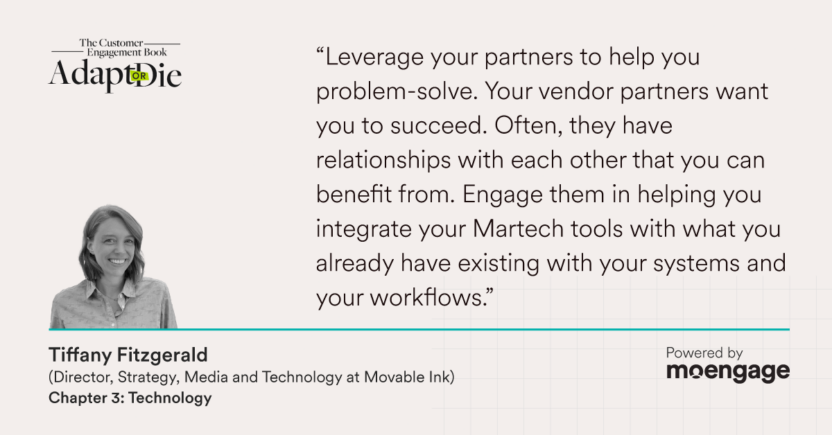
Don’t do it alone. Include your tech team so you can have a design-first approach to integrations and upgrades and all of the teams that are going to be involved in the change.
8: Can you tell me a little bit more about what a design-first approach means?
A design-first approach will take the processes and workflows you have internally and map those to your customer experience.
However your customer interacts with your brand, what are the tech stack components that are laddering up to that experience? And then internally, who’s powering those different tech stack experiences?
So once you’re centering on that design, you can plan your processes, systems and workflows around what your customer needs for their journey to be successful.
Likely there are already artifacts that exist and have led you in the past to understand your customer experiences, your people, and your tech. These need to be updated regularly, including when you’re integrating new parts of your Martech stack.
9: What are the current shortcuts where AI and automation can significantly streamline the campaign planning and execution process?
The biggest place you can have AI help you immediately is data analytics.
I think this is one of the places where it’s strongest right now. The large language models are helping query our large data sets using language, and we can also leverage deep learning to find insights we wouldn’t have known.
Instead of just seeing a historical view of your data and analytics and then being able to decision based on what customers have always done, it’s using deep learning to teach itself patterns and be able to predict what could happen in the future and action off of what might be the next step.
10: On the flip side, where is human-level strategy still required to ensure campaigns are creative, effective and aligned with customer expectations?
AI has in no way replaced the human mind and we still need creativity, we still need innovation. Good marketing has always broken the mold. It’s always subverted expectations.
That has always been what makes a leader in good marketing as opposed to a laggard. Are you thinking of the next great thing? Or are you replicating what you’ve already seen?
Original ideation and creativity are squarely in the human brain realm for the foreseeable future.
So however you’re using AI, make sure that you’re still leveraging yourself, your team, your workshops, your brainstorming to come up with the higher level creative, innovative approaches.
11: How can marketers strike the right balance between relying on AI-driven tools and applying their own strategic insights?
Use AI to do what it’s really strong at and your brain isn’t right off the bat.
So in the areas of machine and deep learning, this is an area where most brains don’t just naturally look at a large group of numbers and can say, “Oh my gosh, I’ve already figured out what the algorithm is and I have an idea where this customer is going to go next.
And I think you should serve this customer X.” So, in this data-first marketing world, leverage AI there right away.
Next, leverage AI and automation in insights reporting.
When you get all those insights, when you have an idea, it can really help you test and automate so that your team can be working on what it works on best, which is the creative approach, the way your brand connects with your customers, continuing to learn how that works and continuing to evolve.
12: With technology evolving rapidly, how can marketers future-proof their Martech investments to remain effective long-term?
Evaluate your stack and investments to ensure you’re set up for success, and be flexible about what that stack looks like.
A part of that is testing to understand a baseline for what’s working and what we should expect out of our tech stack. And then expect to move the needle year over year. Set up data and analytics, whatever’s required to know how much ROI you bring the organization from your Martech investments.
Then make sure you’re loud about what you achieve and clearly illustrate your wins, your learnings, your growth opportunities to your executive leadership team.
If you’re bringing them in and you’re loudly saying, “Hey, we tested this, we found it wasn’t as effective as this, but that means we know why,” that will build you credibility when you’re ready to share great results.
When it comes to your renewal cycles, you’re not asking for the investment without your team understanding exactly what they were getting out of it all year.
You want them to be like, “Oh, yeah, of course, I think we’ve gotten a lot from your Martech investment this year. So of course you can have that budget and maybe even more for the next year.”
And then, even though it’s tempting to look for a one-tool-for-everything solution, there are smaller applications that are often the answer to creating whatever bespoke tech solution that really works for your organization and team.
You can definitely start with those larger tools that get a lot done, but be open to bolting on smaller applications that do exactly what your team needs to do to have that creative and innovative edge.
This interview Q&A was hosted with Tiffany Fitzgerald, Director, Strategy, Media and Technology at Movable Ink for Chapter 3 of The Customer Engagement Book: Adapt or Die.
Download the PDF or request a physical copy of the book here.



